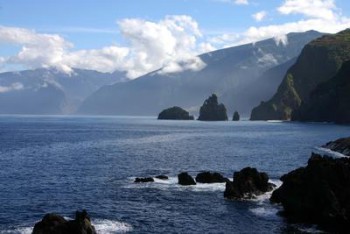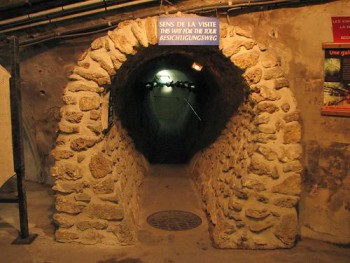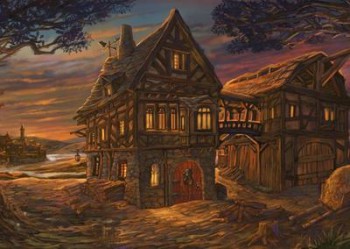World Building 101: The Village
The heroes paraded back into the village, leading their mules laden with treasure liberated from a nearby dungeon. As they entered the small village in the middle of nowhere, they soon split up to take care of their spoils. Three of them met with the local jeweler, presenting him with the choicest gems and fine jewelry they’d acquired on their adventure. The others descended on the local merchants to sell off the more mundane treasures while the sorcerer carried the magic items the party did not need to the convenient wizard’s tower, turning them into useful gold coins. The rogue slipped away to meet with the local guildmaster to make his abeyance and provide him with a cut of the treasure. The guildmaster smiled at the bounty and passed on a list to the rogue for items to search for in his further adventures.
That evening, the sounds of merriment filled the air of the village. A crowd had gathered at the local tavern and the barmaids whirled away from those patrons who became too “inquisitive” as they delivered the mugs of ale and heaping piles of food to those assembled. The female barbarian noted with approval the new bartender was a strapping young man who was returning her admiring looks. Only the poor watchman was left out, standing his lonely guard as he patrolled the streets of the village, staring out into the darkness that hid who knows what.
If you’re like me, that scene sounds awfully familiar. It’s appeared too often in bad fantasy stories, bad fantasy movies, and WAY too many role playing games. “But Rich,” you say, “the party has to have somewhere to spend their treasure. Otherwise, there’s no point in giving it out?”
And my response is, “You’re absolutely right, but for the wrong reasons.” Let me explain what I mean. (Good, otherwise this would be a darn short blog entry – Editor).
The biggest problem is, that scene above should be taking place in a large town or at least a small city. A medieval (or pseudo-medieval) village is not going to have jewelers or places to sell magic items (if you’re doing that kind of fantasy). The tavern is not going to have a bevy of barmaids and taverns do not traditionally sell food — that’s what the inn was for (if there even was an inn). And why in heaven’s name would you have a village that close to a dungeon populated by evil creatures anyway? Most sensible villagers would have packed up and moved to safer places years ago (if they hadn’t all been killed in their sleep by the monsters). No, this village in the scenario above seems to have only one purpose — to provide adventurers with a place to stay while they’re off looting the local dungeon de jure. Not only is that not realistic — it’s boring.
To help the novice writer or game master avoid this, let’s look at how population centers get started in the first place. First off, take a close look at the terrain of the world you’re setting your story in. People occupy places for two main reasons — it has resources they need AND it has a sufficient source of potable water. That’s why when most new territory was settled, the colonists set up in places that had deep harbors, rivers, sufficient area to plant food, enough wild game to sustain them until they could set up their own animal husbandry, and there had to be salt (either from the ocean or from salt licks/mines).

Once you’ve established your cities on the coastline, then your intrepid colonists can begin pushing inland. Again, most of them will follow rivers whenever possible because it makes for much simpler travel. If the river forks, there’s a good possibility a town will develop there also. It makes a good stopping place for people coming up river and a natural place to set up a trading post to handle goods coming down both forks of the river.
If you push away from the river, there are still reasons why towns spring up out of the ground. Is there a natural choke point in the terrain? Then whomever is in charge of the colonists might erect a fort here to help protect the areas toward the sea. If there’s a fort, then there are soldiers, which means soon there will be soldiers’ wives, taverns, teamsters for hauling supplies, warehouses, churches, gambling halls, and so on. If the fort survives long enough, then the town will begin to morph adding more general housing, merchants, schools, etc. However, if this is a rapidly expanding frontier, there’s a good possibility the fort will become redundant and the soldiers will be moved further into the interior and the town around the fort will become a ghost town (perhaps literally if you’re running a more dark fantasy/horror scenario).
Terrain and water are vital for making your towns and villages feel organic to the story. Think about the resources available for the population when you go to build your population centers. There’s a reason people built sod houses during the early expansion into the Great Plains of the United States – there were minimal trees available on the plains (after all, they weren’t called the Great Forests). Shipping lumber is expensive; especially the further away from a source of water you go, so only the wealthiest of people could afford wooden houses at first. Villages set near the mountains may have numerous buildings made of stone. Villages set in a more desert setting may be made of sandstone and a little wood, although it might even be a tent city as your desert dwellers wander from oasis to oasis, staying only as long as the water holds out.
Just because you have water doesn’t mean you can put any number of people in an area. The Cahokia Mounds in Illinois were believed to have held up to 40,000 people which would have made it the biggest city in North America until the 18th century. However, archeologists now believe the reason that Cahokia was abandoned was not due to warfare but because they had so many people that the water became too polluted to support the population.1 Even pioneers in the 19th century soon learned you can only dig a well so deep before it doesn’t provide enough water. An overabundance of people/livestock/ irrigation can cause a drought as easily as Mother Nature. So, when planning your village for your story, think about how do your people get their water and how they deal with waste water.

And if you’re building sewers, you’re definitely dealing with a fairly advanced culture, a fairly wealthy culture, and probably a fairly old city. In the real world, Paris may have built its first “sewer” around A.D. 1200,2 but it wasn’t until the reign of Napoleon III until what we now think of as the Sewers of Paris were created.3 Considering the fact that Paris was first established back in the 3rd Century B.C.4, that means for over 1500 years, Parisians counted on the Seine River to deal with all their wastes. So, if you’re not dealing with an advanced society, mentioning the “ripeness of the air,” especially in summer, would be appropriate in your story.
So, for sake of argument (and moving this blog post along – Editor), let’s say you’ve reviewed your map, found a perfect intersection of terrain, resources, food, and water to justify putting a village down for your heroes to interact with it. Now what?
People, that’s what. Who’s going to live in your village?
We’ll say your village came about because it’s at a place where two small rivers meet as well as being approximately a day’s ride from a mining camp and an old trail crossed the area nearby. Also, let’s say the trail leads to a large fort that guards a mountain pass, but the fort is several days distant, so there’s some military traffic through the village, but not a lot. Being about a day’s ride from the camp means it’s a natural place for the miners to bring their ore to load it on boats to take down river and a place for merchants to build warehouses to take goods up to the miners. Plus it’s far enough away from the mines for the miners to come blow off a little steam without creating too big a ruckus.
Well, that helps already, with just that nugget of an idea, we’ve already identified several businesses and probably inhabitants for the village. Along with the warehouses, we’ll need stables for the horses, blacksmiths, wainwrights to repair the wagons, teamsters or muleskinners to drive the wagons, general stores for food and other supplies, and perhaps a merchant who specializes in mining equipment. And that’s just the infrastructure to support the mines. The local inhabitants will rely on the general store to provide not only food, but perhaps their seed and farming supplies. (I’m thinking there’s probably not a lot of fertile land near the mines, so the village probably has a symbiotic relationship with the mine – they sell their crops for a share of the profits from the ore. (Bad plot bunny, no carrots.))
 Of course, we’re now going to need houses. Most are going to be single story dwellings, although a few of the wealthier merchants may have indulged in a second floor. Villages tended to grow organically, so depending on the terrain, houses may be clumped together here and there, so the streets, if they can be called that, will meander like the proverbial sailor after a good night in port. Also, if this is a pseudo-medieval story, it’s highly unlikely there are street lamps and if there are, they’re going to be clustered near the largest merchants’ dwellings. Unlike the movie version of the American Old West, it’s not likely to have a large straight thoroughfare right through the middle of the town.
Of course, we’re now going to need houses. Most are going to be single story dwellings, although a few of the wealthier merchants may have indulged in a second floor. Villages tended to grow organically, so depending on the terrain, houses may be clumped together here and there, so the streets, if they can be called that, will meander like the proverbial sailor after a good night in port. Also, if this is a pseudo-medieval story, it’s highly unlikely there are street lamps and if there are, they’re going to be clustered near the largest merchants’ dwellings. Unlike the movie version of the American Old West, it’s not likely to have a large straight thoroughfare right through the middle of the town.
Even if this is a fantasy story vice historical fiction, unless there’s something incredibly unique about this village, you’re not going to have a wizard hanging out here. They’re either going to be in a major city where they can get patrons to fund their research or they’re probably in the middle of nowhere so when their research goes boom, no one notices, except maybe their poor apprentices. They might come “to” the village to get mundane supplies (and new apprentices), but they’re not going to build a tower or set up a magic shop in a village like we’re building here. If anything, you might find a hedge wizard plying his trade or a witch who specializes in healing—think Miracle Max vice Merlin. It would be a miracle to find someone with serious power in this village unless they’re strictly passing through and your audience is going to need to believe there is a good reason for them to be here unless you want your book to become a projectile in the hands of an angry reader.
I suspect the miner’s camp will have its share of tent taverns and camp followers to help relieve the miners of their pay, but in this village, since it is a destination point for traders, we can assume there’s probably “a” tavern and “an” inn. Probably nearby each other, but not too close. The inn is going to cater more toward the travelers who are going through the area, so the owner is likely to be rather particular about who they let stay there. Since this village does see a lot of river traffic though, let’s say there’s a small building attached to it where the locals prepare food for visitors. If someone’s is there, either they’re a stranger in town or one of the people who works there — the locals will eat in their own homes.
The tavern is likely to be familiar to tavern goers whether in the middle ages or modern times. Our tavern will have a long wooden bar to protect the alcohol (and the bartender) when the inevitable fight breaks out. Possibly a few kegs of ale — might even have one that’s imported from downriver — a few bottles of stronger alcohol and maybe something exotic they keep just for those occasional heroes who wander through with real money. It’s unlikely there is more than one barmaid and it’s probable she’s the bartender’s wife. There are going to be a few tables and chairs of uncertain repair. On certain nights, there might even be a musician playing for tips and drinks.
We’ll add a few more places to help round out the village. This village is fairly prosperous due to the mine, so we’ll also give them a small meeting house. It serves as the court house, the town council’s chambers, a place for the local children to take lessons during the day, and a place to host the dances on festival days. There is a small jail to deal with the occasional brawl at the tavern and the sheriff sleeps in a room in the back part of the jail. His three constables have houses in town and report for duty at dusk. There’ll also be one or two temples, but given the small size of the population, it’s likely one of them deals with the dominant religion in the area (or major god if you have a pantheon for your tale) and then one more non-denominational for everyone else who comes by. Neither is likely to be ornate, but the non-denominational one is probably more run-down due to lack of support.
 So, now when your heroes come up river, en route to their adventure, you now have a realistic village for them to disembark. Remember though, realistic doesn’t mean it’s boring. Will your heroes get caught in a war between two wealthy merchants (see: Lincoln County War)? Is there a rampaging army (monster, human, or other) heading to loot the mine and will the townspeople pay your heroes to help defend them (see: The Magnificent Seven)? Perhaps there’s been a rash of hijackings, either on the river or on the route to the mine and the merchant’s council will pay your heroes to discover who’s trying to run them out of business. And what if all of this is being coordinated by a malevolent being who wants…
So, now when your heroes come up river, en route to their adventure, you now have a realistic village for them to disembark. Remember though, realistic doesn’t mean it’s boring. Will your heroes get caught in a war between two wealthy merchants (see: Lincoln County War)? Is there a rampaging army (monster, human, or other) heading to loot the mine and will the townspeople pay your heroes to help defend them (see: The Magnificent Seven)? Perhaps there’s been a rash of hijackings, either on the river or on the route to the mine and the merchant’s council will pay your heroes to discover who’s trying to run them out of business. And what if all of this is being coordinated by a malevolent being who wants…
Well, that’s up to you what someone might want here.
After all, it’s your world.
Notes:
1. Snow, Dean (2010). Archaeology of Native North Americas. Upper Saddle River, NJ: Prentice Hall. pp. 201–203.
2. “The Sewers of Paris: A Brief History,” mtholyoke.edu. 2010.
3. “Les égouts parisiens,” paris.fr. 2010.
4. Margerison, Charles (19 April 2011). Amazing People of Paris: Inspirational Stories. Amazing People Club. Pg 167.
Richard C. White is a science fiction/fantasy author. His latest work is Terra Incognito: Building the Worlds of Your Imagination, a non-fiction work about world building, which was released October 2015. His other works include Full Moon Affair, a fantasy noir short novel, and The Dark Leopard: Mouse Trap, an homage to the golden-age of comics. Additionally, Rich has worked in the media tie-in realm, writing in the worlds of The Incredible Hulk, Star Trek, Doctor Who, and he did the novelization of Gauntlet Dark Legacy, which was a best-selling title for his publisher. He will be conducting a Kickstarter for his dark fantasy short story collection, For a Few Gold Pieces More, in the near future.

Plus, there is the effect of the treasure-laden adventurers coming back to the village to unload all their loot … and trigger some serious economic disruptions as gold and gems flood the local distribution system and overwhelm the existing economic power structure. Fun times for all, for sure!
[…] Richard C. White, in “World Building 101: The Village” at Black Gate, vents about cliché adventurers who to the local village with laden pack animals to […]
Eugene,
There’s NO doubt that all that gold and silver coming into town would disrupt things. I address “gold rush” inflation in my chapter on Economy in my book, “Terra Incognito”. Nothing like ridding the area of monsters and then getting run out on a rail because the locals can’t afford anything anymore.